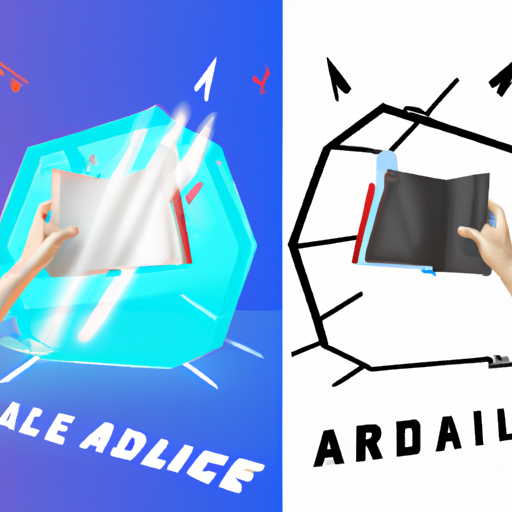Have you ever wondered what sets virtual reality and augmented reality apart? Understanding the Distinctions between Virtual Reality and Augmented Reality is here to shed light on the subject. This informative article will delve into the contrasting features of these two immersive technologies, providing you with a clear understanding of how they differ. Whether you’re a tech enthusiast or simply curious about the world of virtual and augmented reality, this article is a must-read to grasp the nuances of these exciting advancements.
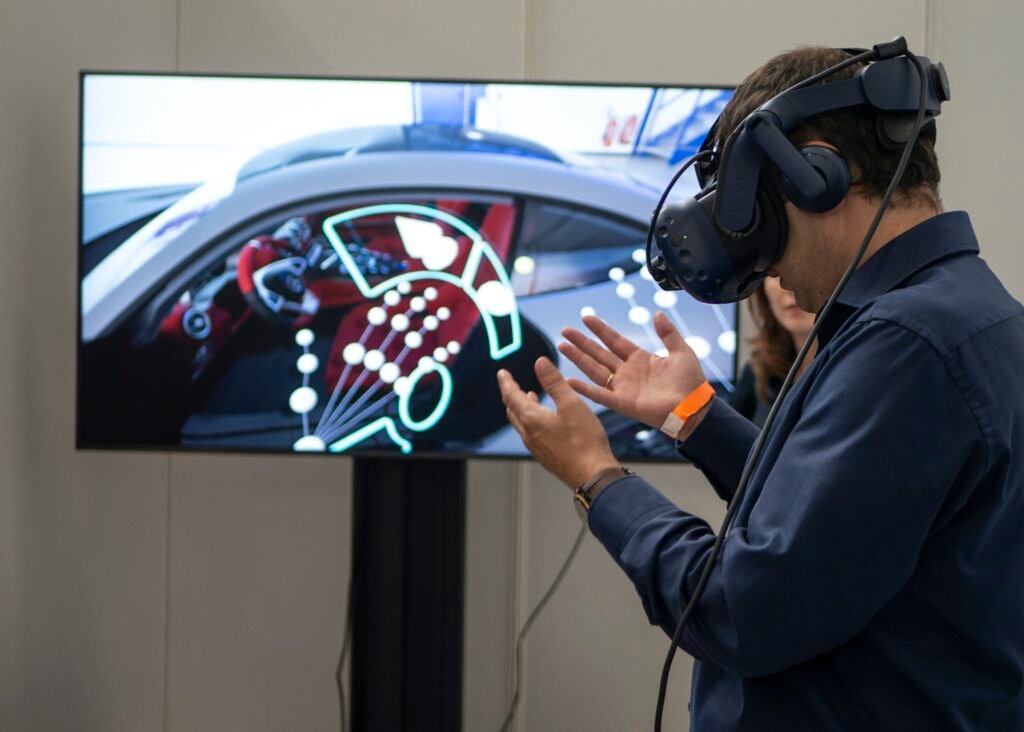
What is Virtual Reality
Definition of Virtual Reality
Virtual Reality (VR) is a technology that simulates a completely artificial environment, allowing you to interact and immerse yourself in a virtual world. It utilizes computer-generated graphics, sounds, and sensory inputs to create a realistic and interactive experience. By wearing a VR headset, you are transported to a virtual realm where you can explore, manipulate objects, and engage in activities that feel real.
Features of Virtual Reality
Virtual Reality offers several key features that enhance the user experience. Firstly, it provides a sense of presence, making you feel like you are physically present in the virtual environment. This is achieved through the use of 3D visuals, spatial audio, and haptic feedback. Secondly, VR allows for real-time interactions, enabling users to manipulate objects and perform actions within the virtual space. Thirdly, virtual reality can provide a high level of immersion, engaging multiple senses to create a fully immersive experience. Lastly, VR applications can be designed for various platforms, including gaming consoles, PCs, and standalone headsets, making it accessible to a wide range of users.
Examples of Virtual Reality
Virtual Reality has found its application in various industries. In the gaming industry, VR allows players to step into the virtual world and experience adventures firsthand. Games like “Beat Saber” and “Half-Life: Alyx” provide immersive gameplay and unique experiences. In the field of education, VR is utilized to create interactive learning environments, where students can explore historical sites or interact with virtual models. Medical training also benefits from VR, as it offers realistic simulations for surgeries and procedures, minimizing risks in real-life scenarios. Virtual prototyping in architecture and design allows architects to visualize and modify projects before they are built in the physical world. Additionally, VR is used in therapy and rehabilitation to create safe and controlled environments for patients with phobias or physical disabilities.
What is Augmented Reality
Definition of Augmented Reality
Augmented Reality (AR) is a technology that overlays computer-generated elements onto the real world, blending virtual and real-life environments. By using AR-enabled devices, such as smartphones or smart glasses, users can see and interact with virtual objects and information superimposed on their surroundings. Unlike VR, AR does not create a fully immersive experience; instead, it enhances the existing reality by adding digital components.
Features of Augmented Reality
Augmented Reality offers several unique features. Firstly, it enhances situational awareness by providing users with additional information about their surroundings. This can include labels, instructions, or even real-time data overlays. Secondly, AR enables interactive experiences by allowing users to interact with virtual objects or characters within their physical space. It can also facilitate gesture recognition, enabling hands-free interactions. Thirdly, AR can be experienced using mobile devices, making it easily accessible to a large number of users. Lastly, augmented reality can provide real-time information on objects or locations, such as identifying landmarks or displaying product details while shopping.
Examples of Augmented Reality
Augmented Reality has gained popularity in various fields. In the realm of gaming, mobile apps like “Pokémon Go” became a huge hit, blending the real world with virtual creatures for users to capture and battle. In the realm of education, AR is used to create interactive learning experiences, where students can explore virtual models or dissect virtual organisms. In the retail sector, AR allows customers to visualize products in their own space before making a purchase decision, such as trying out furniture or clothing virtually. Furthermore, AR has found applications in industries like healthcare, where it can assist surgeons with visual guidance during procedures, and in tourism, where it can provide real-time information and virtual guides at landmarks.
Key Differences between Virtual Reality and Augmented Reality
Conceptual Difference
The fundamental difference between Virtual Reality and Augmented Reality lies in their conceptual approach. Virtual Reality seeks to create a fully immersive simulation, transporting the user to a computer-generated environment that can be entirely disconnected from the real world. On the other hand, Augmented Reality enhances the real world by overlaying digital elements onto it, aiming to blend the virtual and physical environments seamlessly.
Interaction with the Environment
In Virtual Reality, users interact with the virtual environment through hand controllers or body motion tracking, manipulating digital objects that exist only in the virtual realm. Augmented Reality, however, allows users to interact with both virtual objects and the real-world environment simultaneously. By using gestures, voice commands, or physical touch, AR users can manipulate virtual objects within their physical surroundings.
Degree of Immersion
Virtual Reality offers a high degree of immersion, aiming to transport users into a fully simulated world that feels and looks real. It engages multiple senses, including sight, sound, and touch, to create an immersive experience. In contrast, Augmented Reality provides a partially immersive experience as it blends virtual elements with the real world. The user’s focus remains on the physical environment, with digital elements complementing and enhancing it.
Realism
In terms of realism, Virtual Reality often strives for total realism by creating detailed and lifelike virtual environments. Users are presented with computer-generated graphics, 3D audio, and haptic feedback that mimic the real world. Augmented Reality, on the other hand, focuses on overlaying virtual elements onto the real-world environment. While the digital elements in AR can be visually realistic, they are designed to integrate seamlessly with the physical environment rather than imitating it entirely.
Use Cases
Both Virtual Reality and Augmented Reality have a wide range of applications. Virtual Reality finds uses in entertainment, gaming, education, training simulations, healthcare, and more. It offers the opportunity to explore virtual worlds, experience adventures, and practice skills in a controlled environment. Augmented Reality, on the other hand, is commonly used in fields such as education, retail, tourism, healthcare, and industrial sectors. AR enhances real-world experiences, providing additional information, virtual guides, or immersive visualizations.
Conceptual Difference
Definition of Virtual Reality
Virtual Reality is the creation of a fully artificial environment that immerses the user and transports them to a virtual realm using computer-generated graphics and sensory inputs.
Definition of Augmented Reality
Augmented Reality is the blending of virtual elements with the real world, overlaying computer-generated information onto the user’s physical surroundings.
Primary Focus
The primary focus of Virtual Reality is to provide an immersive experience that transports the user to a completely artificial environment. It aims to create a sense of presence and allow users to interact with the virtual world.
The primary focus of Augmented Reality is to enhance the user’s real-world experience by overlaying virtual elements onto the physical environment. It aims to provide additional information, enhance situational awareness, or enable interactive experiences within the real world.
Objective
The objective of Virtual Reality is to create a sense of escapism and enable users to experience things that may not be possible in the real world. It allows for exploration, interaction, and stimulation in a controlled and immersive environment.
The objective of Augmented Reality is to seamlessly integrate digital information with the real-world environment, providing users with enhanced situational awareness, interactive experiences, and real-time information.
User Experience
The user experience in Virtual Reality revolves around complete immersion, allowing users to feel present in the virtual environment and interact with it as if it were real. The focus is on creating a sense of wonder, excitement, and exploration within the virtual world.
In Augmented Reality, the user experience centers around enhancing the real-world environment rather than replacing it. The focus lies on integrating digital elements seamlessly into the user’s surroundings, making the virtual content relevant and useful within the context.
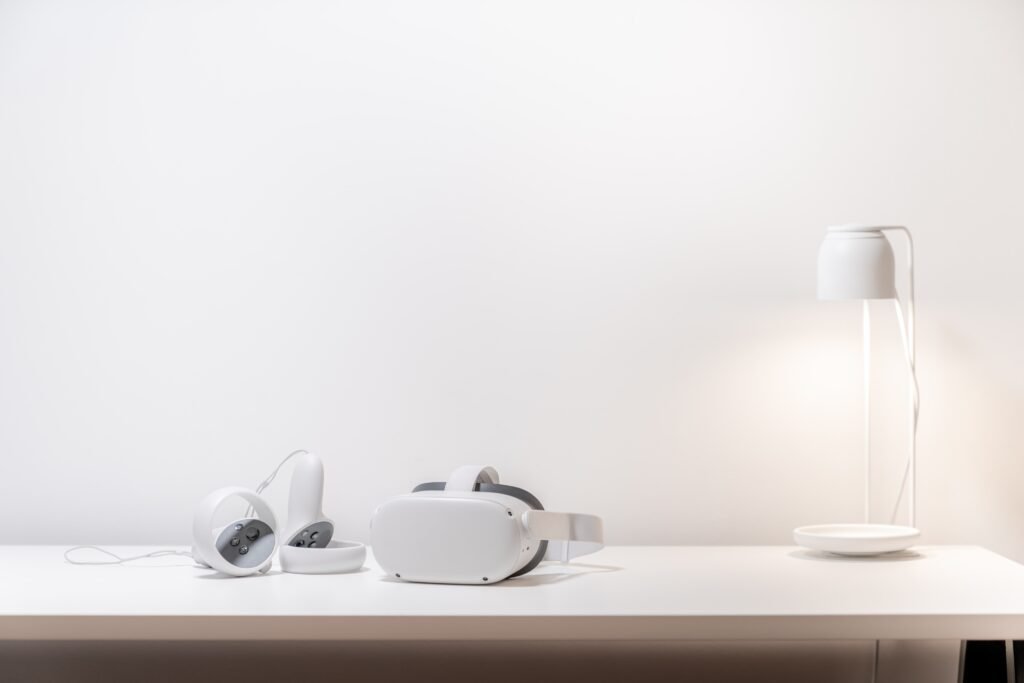
Interaction with the Environment
Virtual Reality Interaction
In Virtual Reality, users interact with the virtual environment through specialized, motion-tracking controllers or through the use of head and body tracking. These interactions enable users to manipulate virtual objects, navigate within the virtual world, and perform actions through gestures or button inputs.
Augmented Reality Interaction
In Augmented Reality, users primarily interact with the virtual content by using gestures, voice commands, touchscreens, or physical objects. AR-enabled devices such as smartphones or smart glasses allow users to interact with virtual objects and information superimposed on their physical surroundings.
Physical Environment
Virtual Reality replaces the user’s physical environment with a computer-generated simulation, isolating them from the real world. Users may be seated or standing in a stationary position or may have the freedom to move around in a limited physical space.
Augmented Reality, on the other hand, overlays virtual elements onto the user’s physical environment, allowing them to interact with both the virtual and real-world objects simultaneously. Users are typically in their natural environment and can move around freely.
Virtual Elements
In Virtual Reality, all the elements perceived by the user are entirely computer-generated. This includes virtual objects, environments, characters, and sensory inputs such as visual and auditory cues.
Augmented Reality overlays virtual elements onto the real world, supplementing the user’s view of their surroundings. These virtual elements can include 3D objects, annotations, labels, or visual effects that provide additional information or enhance the existing environment.
Degree of Immersion
Virtual Reality Immersion
Virtual Reality aims to provide a high level of immersion by engaging multiple senses. Users are visually and aurally immersed in virtual environments, often experiencing a sense of depth and spatial presence. Haptic feedback through controllers or dedicated haptic suits can further enhance the feeling of immersion.
Augmented Reality Immersion
Augmented Reality provides a less immersive experience as the user’s focus remains on the real world. However, visual overlays and audio cues can still create a sense of presence. The level of immersion in AR depends on the extent to which virtual elements are integrated into and interact with the physical environment.
Complete Immersion vs. Partial Immersion
Virtual Reality offers complete immersion, transporting users to a virtual environment that feels entirely separate from the real world. Users often feel fully present within the virtual context and have limited awareness of their physical surroundings.
Augmented Reality offers partial immersion, as the user remains aware of and interacts with the physical environment while being augmented with virtual elements. The focus is on enhancing the real world rather than creating a separate reality.
Sensory Inputs
Virtual Reality engages multiple senses to create a more immersive experience. Visuals in VR are presented through stereoscopic displays, creating a sense of depth and 3D perception. Spatial audio provides realistic sound cues and directionality, further enhancing the sense of immersion. Haptic feedback, such as vibrations or pressure sensations, can simulate touch and physical interaction.
Augmented Reality primarily relies on visual inputs, as virtual elements are superimposed onto the user’s physical surroundings. Audio cues can also be utilized to enhance the AR experience. However, the level of sensory immersion in AR is generally lower than in VR.
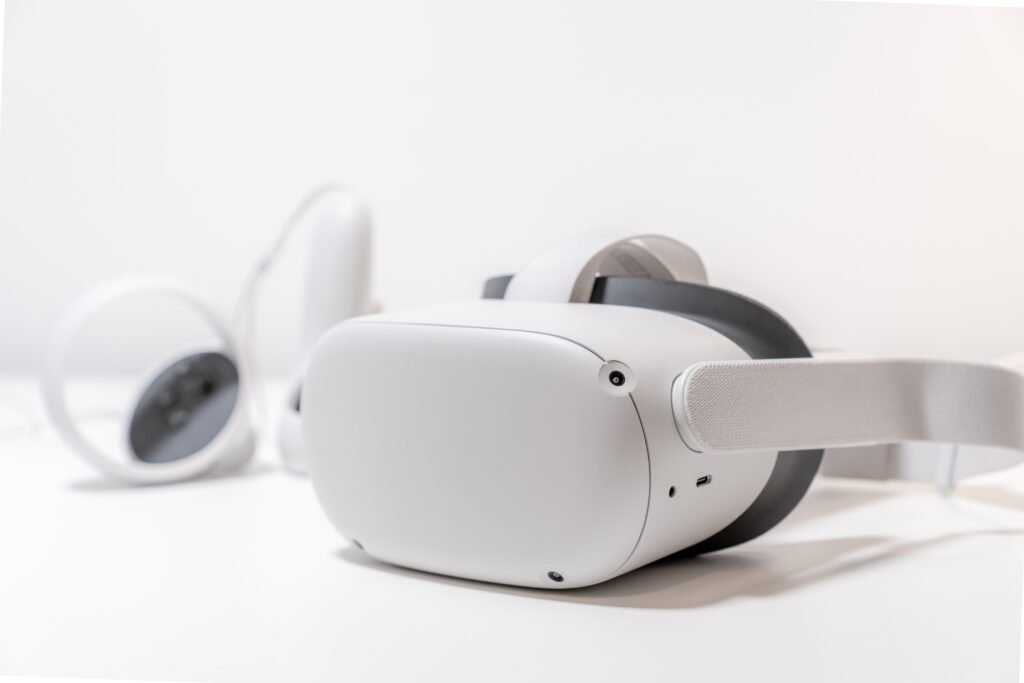
Realism
Virtual Reality Realism
Virtual Reality aims to create realistic and detailed virtual environments that mimic the real world. By utilizing high-quality graphics, textures, and lighting simulations, VR can provide a visually immersive experience. Additionally, spatial audio and haptic feedback can enhance the realism, making the virtual world feel more tangible and believable.
Augmented Reality Realism
Augmented Reality focuses on integrating virtual elements into the real world in a seamless manner. While virtual elements in AR can be visually realistic, the main objective is to make them appear as if they naturally belong within the physical environment. The realism in AR comes from the ability to align virtual objects with the user’s physical surroundings, creating a sense of integration.
Visual Overlays
Virtual Reality relies on displaying fully computer-generated visuals, creating environments and objects that don’t exist in the real world. These visuals can range from highly detailed and lifelike to abstract and fantastical, depending on the intended experience.
Augmented Reality overlays virtual elements onto the user’s view of the real world. These elements can be 3D objects, annotations, or information overlays that blend with and augment the actual environment.
Integration with Reality
Virtual Reality completely replaces the user’s physical reality with a computer-generated simulation. It creates a separate and immersive world that can be experienced independently from the real world.
Augmented Reality enhances the user’s perception of the real world by overlaying digital elements onto their physical surroundings. The virtual content in AR is designed to integrate seamlessly with the user’s environment, providing context-specific information or enhancing their interaction with the physical world.
Use Cases
Virtual Reality Use Cases
Virtual Reality finds numerous applications in different industries. In the realm of entertainment, VR is used for immersive gaming experiences, where users can fully engage in virtual adventures, battle enemies, or explore unique environments. VR is also utilized in training and simulation, allowing professionals in fields like aviation, military, and emergency services to practice complex procedures and scenarios in a safe and controlled environment. In the field of education, VR offers interactive learning experiences, enabling students to explore historical sites, study anatomy, or conduct virtual experiments. Healthcare and medicine benefit from VR by providing realistic simulations for surgical training, pain management, or therapeutic applications. Additionally, VR is used in architectural design to create virtual walk-throughs of buildings and prototypes before construction.
Augmented Reality Use Cases
Augmented Reality has found applications in various industries. In the field of retail, AR is utilized to enhance the shopping experience by allowing customers to visualize products in their own space before making a purchase. AR is also used in tourism to provide virtual guides, real-time information, or interactive experiences at landmarks and tourist attractions. In healthcare and medicine, AR assists surgeons by superimposing visual guidance during procedures, enabling them to access vital information directly within their line of sight. Education benefits from AR by providing interactive and immersive learning experiences, where students can explore virtual models, visualizations, or augmented textbooks. Industrial sectors also benefit from AR by providing real-time information and augmenting process workflows through heads-up displays and wearable AR devices. Finally, AR is used in marketing and advertising to create engaging and interactive campaigns, enhancing customer experiences and boosting brand awareness.
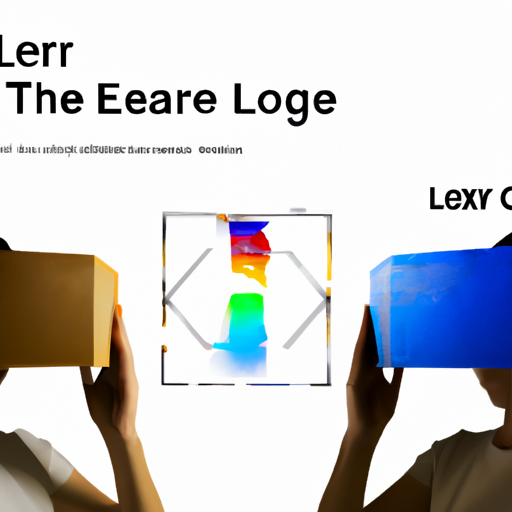
Conclusion
Virtual Reality and Augmented Reality are two distinct technologies that offer different experiences and applications. Virtual Reality aims to create fully immersive environments, transporting users to virtual realms and allowing them to interact with artificial worlds. Augmented Reality, on the other hand, enhances the real world by overlaying virtual elements onto the user’s physical environment. Both VR and AR have their own unique features, differences, and applications. As technology continues to evolve, both Virtual Reality and Augmented Reality are expected to shape various industries and revolutionize user experiences in the years to come.
